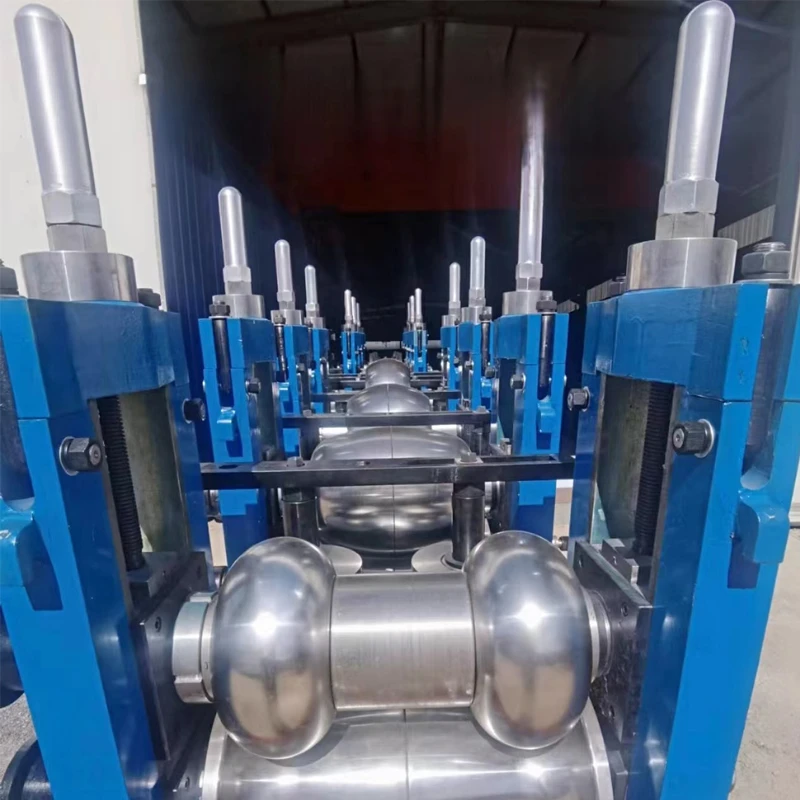tandem cold rolling mill
Understanding the Tandem Cold Rolling Mill A Gateway to Precision Metal Processing
In the realm of metal processing, the tandem cold rolling mill stands out as a crucial technology for producing thin strips of metal with exceptional uniformity and precision. This process has transformed the manufacturing landscape, rendering high-quality metal products that meet the diverse needs of industries, from automotive to aerospace and construction. This article delves into the fundamentals of tandem cold rolling mills, their operational mechanisms, benefits, and applications.
What is a Tandem Cold Rolling Mill?
A tandem cold rolling mill consists of multiple stands, each equipped with rollers that compress the metal strips as they pass through successive stages. The process is termed 'cold' rolling because it occurs at room temperature, as opposed to hot rolling, which involves higher temperatures. This innovative setup allows for continual processing, where the metal strip is fed through several roll passes without the need for re-heating.
The Working Mechanism
The operation of a tandem cold rolling mill can be broken down into several distinct stages
1. Coil Preparation The process begins with large coils of metal, typically steel or aluminum. The coils are unwound and fed into the rolling stands.
2. Rolling As the strip enters the first stand, it is subjected to high pressure as the rollers converge. Each subsequent stand continues the rolling process, reducing the thickness of the strip while simultaneously increasing its length and achieving desired material properties.
3. Cooling The metal strip is cooled as it passes through the mill, preventing any undue heating which could alter the material's characteristics. Cooling is crucial for ensuring dimensional stability.
4. Tension Control Maintaining appropriate tension throughout the rolling process is vital. Advanced control systems are employed to monitor and adjust the tension, ensuring smooth operation and preventing defects.
5. Surface Treatments After rolling, the metal strip may undergo surface treatments, such as cleaning or coating, to improve its surface properties and protect against corrosion.
Advantages of Tandem Cold Rolling Mills
tandem cold rolling mill

The tandem cold rolling mill offers a multitude of advantages over traditional rolling methods
1. High Efficiency The continuous nature of the tandem process leads to higher production rates. Multiple reductions can be achieved in a single pass, significantly enhancing productivity.
2. Improved Surface Quality Cold rolling produces a finer surface finish as compared to hot rolling, making it ideal for applications where surface quality is paramount.
3. Dimensional Accuracy The precision achieved through tandem cold rolling is superior, allowing manufacturers to produce components that meet tight tolerances.
4. Enhanced Mechanical Properties The cold working process strengthens the material, resulting in an impressive increase in yield and tensile strength, which is desirable in numerous applications.
5. Energy Efficiency Because the process does not require heating, energy consumption is generally lower, contributing to more sustainable operations.
Applications
Tandem cold rolled products are ubiquitous across various sectors
- Automotive Industry Used in the production of body panels, frames, and other structural components. - Construction Provides materials for structural beams, pipes, and sheet metal for roofing and siding applications. - Electronics Essential for manufacturing components like connectors and casings that require fine tolerances and excellent surface finishes. - Appliances Utilized in making metal sheets for home appliances, ensuring durability and aesthetic appeal.
Conclusion
The tandem cold rolling mill has revolutionized the way metal products are manufactured, offering unprecedented levels of efficiency, accuracy, and surface quality. As industries continue to evolve and demand more sophisticated materials, this technology remains integral to meeting those challenges. With advancements in automation and control systems, the future of tandem cold rolling mills looks promising, paving the way for enhanced productivity and innovation in metal processing.
-
High Frequency Straight Seam Welded Pipe Production Line|BzZhou Xinghua|Precision Welding&EfficiencyNewsJul.30,2025
-
High Frequency Straight Seam Welded Pipe Production Line - BzZhou Xinghua|Precision Engineering&EfficiencyNewsJul.30,2025
-
High-Frequency Straight Seam Welded Pipe Production Line-BzZhou Xinghua Machinery Equipment Manufacturing Co., LTD.NewsJul.30,2025
-
High-Frequency Straight Seam Welded Pipe Production Line-BzZhou Xinghua Machinery Equipment Manufacturing Co., LTD.|Precision Manufacturing, High EfficiencyNewsJul.30,2025
-
High Frequency Straight Seam Welded Pipe Production Line-BzZhou Xinghua Machinery Equipment Manufacturing Co., LTD.|Precision Steel Pipe Manufacturing&Industrial EfficiencyNewsJul.29,2025
-
High-Frequency Straight Seam Welded Pipe Production Line-BzZhou Xinghua Machinery Equipment Manufacturing Co., LTD.|Precision Steel Pipe Manufacturing&Industrial EfficiencyNewsJul.29,2025


